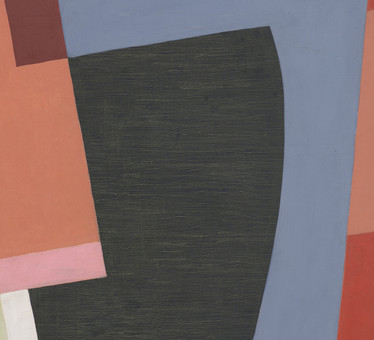Cícero Dias

Escada, Brazil, 1907 —
Paris, France, 2003
A flow of provocative pictorial and psychological power flows in the work of Cícero Dias. At the same time carnal and mental, the work of the Pernambuco artist condenses the inexhaustible dialectic of the relations between real and fantastic, between land and person, between time and space, constituting on the pictorial surface the body of a poetics of colors and perennial dynamics.
The Jundiá mill, in Pernambuco, was the soil where Dias was born and played childhood. Capital of his personal kingdom, it is a land inhabited by strange creatures, hybrid of dream and memory, entirely real while imaginary. From this invisible citadel there flow forms of an intriguing regionalism because it is directed towards the interiority of characters full of feelings and eroticism, like northeastern myths in the midst of artistic creation. It is of this nature that Dias painted in the 1920s and 1930s, such as the vivid watercolors Composition (1928), Amizade (1929) and Mulher nadando (1930). Like the legendary Capibaribe, such a mythological current narrated by Cícero Dias runs full and full on the panel I saw the world … it started in Recife (1926-1929), presented at the Hall of the National School of Fine Arts in Rio de Janeiro (ENBA) , in 1931. The impact of this torrent of approximately 15 x 2 meters was enough to choke academic leadership, causing the work to be vandalized, the resignation of Lúcio Costa, then newly appointed rector of ENBA, and Cícero Dias’s astonishment at the reactionary of the carioca art scene.
In 1937, after being arrested by the state regime, Cícero Dias embarked for Paris, where he actually settled, although not definitively, until the end of his life. In Paris, Dias quickly joined the avant-garde circles, cultivating an open friendship with artists such as Fernand Léger, Paul Éluard and Pablo Picasso. Dias’ painting naturally matures in the new environment and does not lose sight of the fantastic-regionalist poetics of his Pernambuco, something that can be seen in the maintenance of an open, colorful palette, with strong and contrasting tones, as well as in the theme that assumes the starting point for surrealist and abstractionist explorations such as the works Mulher na Janela (1939), Mamoeiro or dancer, Galo or pineapple and Melancia, all from 1940. In these works, the figure gives way to color and form, which culminates in a rich abstractionism of organic, vegetal aspect, especially between 1942 and 1945.
During the 1950s and 1960s, Dias consolidated his research in abstraction, moving towards geometric shapes in diagonal arrangements and giving the works movement and chromatic vibration. The figure returns throughout the 1970s, 80s and 90s, always tinged by the artist’s vital sources that continually sprouted an ancestral and generous lyrical universe.
GGS